Organising a photography shoot can seem daunting. A badly organised shoot will result in a bunch of people standing around feeling awkward, and a stressed out photographer lacking an idea of their next move.
So, how can you organise a shoot that guarantees you get a set of photos that realise your vision?
And what should you do to make sure the shoot gets you the best results from your time, money and effort?
Finally, Which steps should you take to makes sure your shoot is not a disaster?
A well organised shoot will have a confident happy photographer and a team of people who know exactly what they are doing. It results in a set of photos that fulfils the exact requirements of the brief.
In this guide you’ll discover everything you need to organise your own shoot so you get exactly the shots you want and we’ll uncover the pitfalls you should avoid to prevent embarrassment and disappointment.
What Is A Photography Shoot?
A shoot is a photography session where you, the photographer, create images of a subject, person or object styled a specific way and takes place in a location to give a defined look. The look can depend on the target market for the images, the preferences of the photographer or designer, the client or the choices of the people taking part in the shoot. The important thing is that someone has thought about the look, and made decisions on how this is going to be achieved.
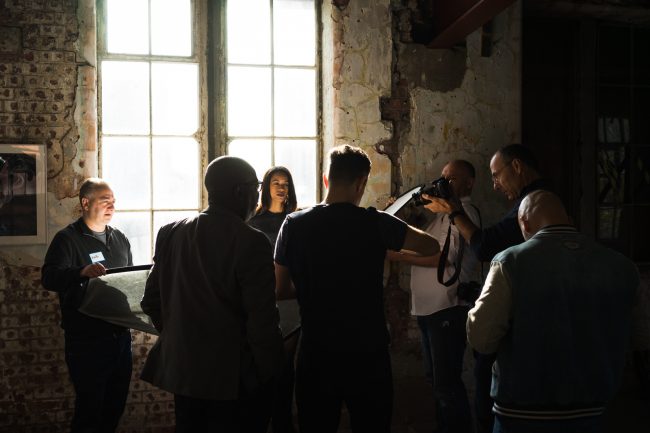
At a commercial level the images are used to make people want to buy products and are used in advertising. More functional pictures may be used in online shops and catalogues. For people who just love taking photos, photography shoots are a fun way to flex your creative muscles and develop your ideas. You can be really creative and work on some outlandish concepts involving funky locations, big lighting and teams of people. Or they can be simple shoots with you and a model on the street. Either way, you are in control of the shoot and ultimately you make the images exactly how you want them.
But, how do you organise a successful photography shoot? Our guide shows you how.
Set Your Goals For The Shoot
Spending a little time at the outset clarifying exactly what you want to achieve from the shoot will save you time, money and heartache later. By writing down your goals you are more likely to produce images that you are 100% satisfied with.
State your specific aims for the shoot. These enable you to measure your success and give clarity when planning your shoot. On the other hand, ambiguous targets leads will lead to an ill-defined shoot and an indistinct set of images.
If you are working for a client (paid or not) you should work with them to clarify theses goals and create a brief. The more specific the better. Clients always have expectations and it is better to clarify them so you can confidently deliver photos that meet them.
The look of your final photos is obvisouly of paramount importance and you may have a clear idea in your head of the images you want to create. If this is the case, gather together some examples and create a mood board using something like Pinterest.
If you don’t have a clear idea of the photos you want to get now is the time to get one. Don’t expect it to magically happen on the day! Browsing Instagram, websites and magazines is a great thing for inspiration, and you can save some of these images to create a mood board.
At the end of this planning stage you should clearly be able to state the overall concept for the shoot, the specific goals, and you should have a mood board.
Set Your Budget
Creating a shoot has a cost. That cost is time or money and usually both. Once you know how much money (if any) you can spend on your shoot if helps with the rest of the organisation.
As a minimum, a shoot will need a photographer, a model, some clothes and a location. Assuming you’re the photographer and you can convince someone to model for free, all you need is somewhere to shoot, something for them to wear and off you go.
Even if you work on this basis it is still prudent to work through all of the steps in this guide. Even a simple shoot with no budget will go a whole lot better if you plan and organise it properly.
Should you be lucky enough to have money to spend on your shoot, the items you’re most to spend on are location hire, models, stylists, hair and make up artists, assistants and lighting rental. Working within the constraints of your budget you can decide which things you need and which you don’t, and which items you might get for free.
Create a budget plan with each of the items listed and the amount of money you can allocate to each.
Decide Where Your Shoot Will Take Place
You can make do without expensive lighting and a make up artist, but you can’t do anything without a location to create your shots. Where you take the photos will define the whole look of the shoot and could well be the most expensive single element of the project. So it is important to get it right!
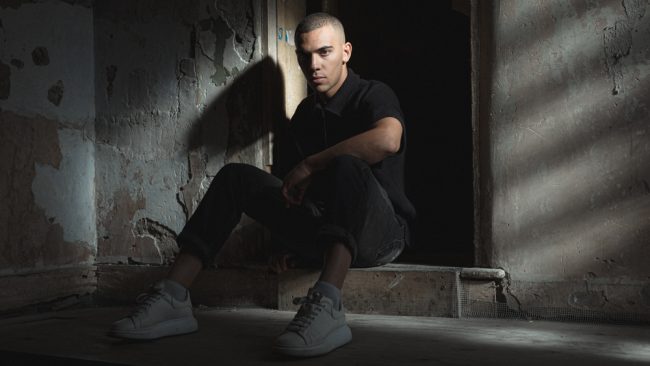
A basic photography studio is a good option. You get complete control of the lighting, environment and background. The model becomes the focus and you don’t have to cloud your thoughts with what else is in the scene or controlling the ambient light.
If you want to tell more of a story with your shoot a location that fits with your concept will do that. Locations can be used to complement or contrast with the look you are shooting. For example, the obvious choice for street wear is the street, but you could also shoot this in a high end hotel bar for a bit of contrast. And flip this around for high end, designer evening wear done on the street.
Public places have the advantage of usually being free to use. Parks, streets, alleyways, railway tunnels all work and they can look perfect in your images and tell a strong story that works with your idea. Be aware that not all public places are truly public and an officious security guard or park warden can easily ruin your shoot by moving you on unless you have secured permission. Many outdoor locations are totally fine though, and so as long as you are not getting in anybody’s way you can shoot away with only few nosy looks from passers by to contend with.
You can hire locations for your shoot. From simple to grand, from cheap to expensive. Derelict houses, bars, aeroplanes, fields, offices, buses, tunnels, gardens and caves can all be booked at your convenience for the purposes of your shoot. They offer the advantage of knowing you will undisturbed for the duration of your shoot and you can do whatever you want. Your kit and team will have somewhere to go, and you’ll be confident you can work without interruption. Plus you’ll have power and maybe tea on hand.
Whether you are paying or not, outdoor locations are at the mercy of the elements. Wind, rain and cold temperatures can totally destroy the best planned shoots. Indoor locations offer one important advantage: you won’t get rained on. The more in control you are the better. Not getting wet is a good thing to be in control of.
Models
A good model will bring ideas to your shoot, they will interpret what you say into poses and looks that will give you the images you want to get. They will be positive, energetic, hard working and patient and a real asset to your shoot. Good modelling is not an easy job.
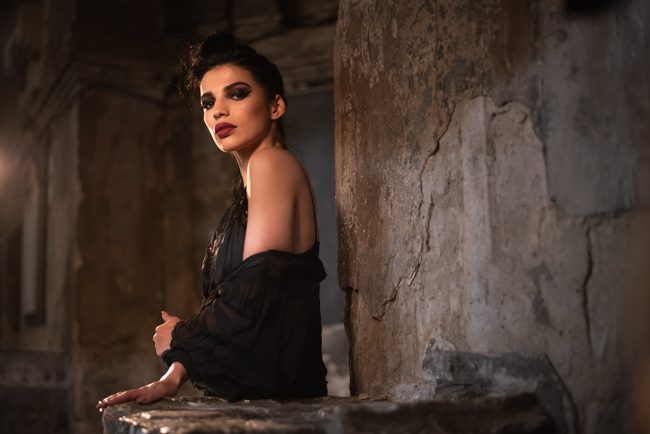
A model who has just one look, gets bored quickly and becomes slightly annoyed when you ask them to do something is less useful and will not help you create an amazing set of photos.
The models you you choose to work with have a great impact on the shoot and should be an important part of your plan.
It is possible to find people who will work for free as a model. You may find inexperienced models who are willing to work in exchange for images they can use in their portfolio, or your may know people who will model for you as a favour. Inexperienced models usually need lots of direction from you to get the shots you want.
Working with experienced professional models will make your life much easier on your shoot and will massively boost your chances of getting great results. Professional models are generally more reliable, easier to work with and better to photograph than inexperienced models.
If you are working with a stylist or have specific clothes for the model to wear you will need to get the model’s sizes before the shoot.
You will need to tell the models about the brief and concept for the shoot and tell them if there is anything they should wear, or whether you need them to do their own hair or make up.
Try to work with models that you know will turn up on the day. Either pick people you have worked with before, or who are recommended. Otherwise choose models who seem experienced, have done lots of work before and appear to be reliable. A no-show from a model will completely scupper your shoot plus waste your time and money. A professional, experienced model who you have agreed a fee with is much more likely to turn up for the job that someone who fancies having a go at modelling for the day and isn’t getting paid.
Try speak to models you have cast for your shoot, you can usually get a feeling for what they are like and if you want to work with them.
Agree any payment with the model prior to the shoot and clarify time, location and anything they need to bring.
StarNow is a good place to look for models.
Stylist, Hair & Make Up
With a well styled, professional model on a shoot it is easy to get great shots. Life as a photographer doesn’t get much better.
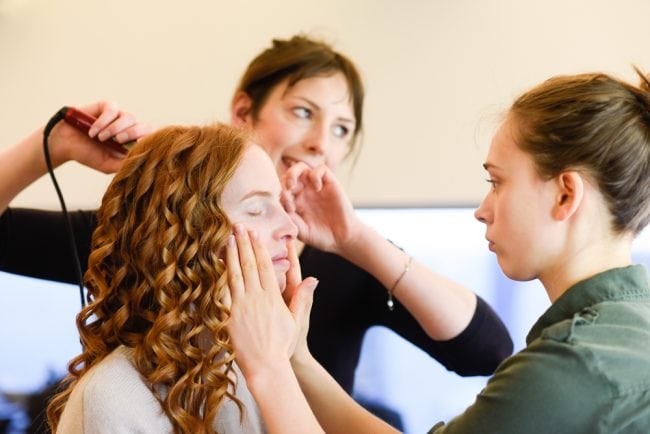
The look of your shoot is defined by the appearance of the model. To create the look you want in your shoot the model will have to wear the right clothes. You may have a wardrobe full of items that will work, or your model may be able to bring something to wear. But if you are going for a specific look you may need someone who can source outfits for you and bring them to the shoot for the models to wear. This is a stylist, they have an amazing ability to source clothes and bring them to a shoot. Usually you will need to pay them.
If you decide not to have a stylist, you could source outfits yourself by buying or borrowing them, or relying on your model to bring their own looks. If you want to do that this should be part fo the brief.
Good hair and make up gives your shoot a professional edge. You should define the hair and make up look when creating the brief. It influences the look of your shoot. You can do hair an make up yourself, ask your models to do it, or employ a hair and make up artist. You may decide that hair and make up is not important to the look you are trying to achieve. That’s fine, but let the model know there won’t be hair an make up on the shoot.
Assistant
You can of course manage your shoot yourself, but you have a finite number of hand and your arms are not extendable. Having an extra pair of hands on your shot can sometimes be a wonderful thing. Even on a simple shoot having someone to hold a reflector in the right place is something you just can’t do alone.
Moving lights and carrying equipment are both things you can do yourself, but having someone else do it speeds things up and makes life much easier.
An assistant is a luxury on a simple shoot and you probably don’t need one, but for a more involved shoot with a few people and lots of kit, having someone to help out will be a good thing.
A good photography assistant knows about lighting, photography terminology and will get things done. You’ll probably have to pay for them. If you’re working with another photographer on your shoot, you can can help each other out and you won’t need to get an assistant.
Image use rights, model releases and credits
You should make the intended us of the images from the shoot clear to everyone from the outset. For a shoot where you will only be using the photos personally, for example on your social media sites, your website and to make a few prints you probably don’t need a model release. This is reasonable use.
Unreasonable use is things like using the photo commercially without a models knowledge, or associating the person in the image with a cause or subject they may not be happy with. So don’t do it unless you have permission.
You may feel more comfortable getting a model release, this is a personal decision for you.
Model releases are contracts that set out how the images will be used. If your your photos may be used commercially e.g. to promote brands & causes, as stock photography or on merchandise you should obtain a signed model release.
Many model releases contain clauses which basically say the image can be used for anything, worldwide, forever. Don’t expect someone to just sign that right away. Be reasonable with what’s in your model release and upfront about the image usage. If you want someone to agree that an image of them could be used for absolutely anything all over the world, be prepared to pay for it.
Crediting the team who helped you make you photos is a nice thing to do, especially if they worked for free. Tagging them on social media helps you all grow your profile.
Kit
At a basic level, the only equipment you really need for your shoot is a camera. Using natural light, in a good location, with a good model styled well, a simple camera will get you the shots you need.
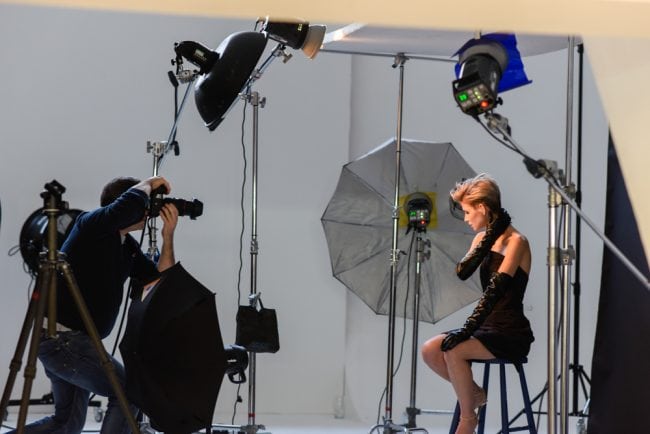
Moving up a level, you might want to think about managing light. Lighting covers everything from a reflector to a full blown location lighting kit.
Other equipment you might need are backgrounds, stands, gels, lenses, light modifiers and more. You can hire jot from places like Wex Rental.
All of this fancy equipment is wonderful for creating some spectacular images on your shoot, but it is a total waste of time and could be catastrophic if you don’t know how to use it. So, if you do hire kit, make sure you know how to use it!
Prepare and check all of your kit before the shoot. Charge your batteries, format your memory cards. Make a list over a few days of what you need to bring and check it off before you leave for your shoot
Managing risks
Things go wrong, it’s a fact of life. Being able to still get the shot even after disaster strikes is the sign of s true professional. Always try to have a contingency plan or back up solution so you can keep shooting in the event of a problem. The more expensive and important the shoot it, the more you stand to lose if things go wrong.
A few things could go wrong are:
Equipment failure – What happens if you drop your camera, rendering it unusable, or if the battery is dead in your lighting kit? Have a spare of anything that is essential for your shoot, and have an idea of how you would work in the event of other kit not working.
Data – Best practice it to shoot to two memory cards and transfer the images to your hard drive as soon as you can.
Damage / theft – You probably already have insurance for your own camera kit, but this may not extend to equipment you hire. Check with your insurer and the hire company to make sure you are covered when that expensive light goes missing.
No show – Possibly the most likely headache you’ll face when organising a shoot is the non appearance of a model. The best case scenario is that you get a text a few hours before saying they’ve come down with a mystery bug, worst case is that they just won’t show up. At the casting stage it’s always a good idea to keep a note of the numbers of other models you shortlisted so you can call them in, you may also have other people you know who could stand in.
Weather – Outdoor shoots are at the mercy of the weather. Have an idea of somewhere else you could go if the weather turns against you. A railway arch or other covered space could work.
Accidents – Don’t ask people to do dangerous things and get insurance that covers you for accidents that occur when people are working for you. You don’t want to be liable for someone not being able to work following an injury on a shoot you organised.
Shot List
There is nothing worse than a brain freeze that strikes at the beginning of your shoot, rendering you unable to think of a single shot you would like to get. Prevent this by putting together a shot list for the shoot so you know which shots you want to get. It will make sure you don’t forget to shoot key images and it will keep you on track with time.
You shot list could specify all of the clothes you need to capture, poses you want to get, lighting you want to do and moods you want to create.
Enjoy Your Shoot
You’ve put in all the hard work organising the shoot, everyone is on set and you’re creating the shots you want to get. Make sure you enjoy the shoot, relax and let your creativity flow…
Feel the need to shoot?
Join one of our shoots and photography experiences.
Leave a Reply